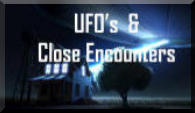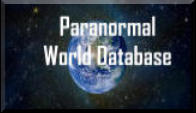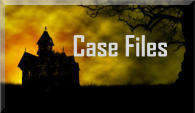It all began in February of 1891 when advertisements for a new parlor board game began to appear in
newspapers around the country. It was called "The Talking Board" and it was presented as a magical device that
would answer whatever questions were posed to it about the past, present and future with remarkable accuracy. It
would be a mystical link to the unknown that could be brought into the comfort and privacy of your own home for
the princely sum of $1.50.
The board that was produced back then was essentially the same as sold in toy and novelty stores today,
displaying the numbers 0-9, the letters of the alphabet and the words "yes", "no" and "goodbye". The layout has
not deviated much over the years with the letters arranged in a semi-circle, the numbers in a row underneath that,
the words "yes" and "no" in the uppermost corners and "goodbye" at the bottom. The first boards and planchettes
were made of wood, but in the modern mode of mass production, affordability and profit margin, contemporary
boards are often made of cardboard with a plastic planchette.
The triangular or heart-shaped planchette (French for "little plank") that accompanies the game is used as a
vehicle to maneuver around the board. The designed method of operation is for one or more people to place their
fingers on the planchette, ask a question and without any human manipulation, observe the planchette move of its
own volition from letter to letter (or number) spelling out a word, name, number or date or to the yes/no areas in
response to a simpler query.
The First Patented Board Typical Board Today
The board was reported to have been tested and proven to work as advertised inside a US Patent Office before
the copyright was issued. One can only speculate what the testing entailed and what enigmatic details were
revealed to those present on that fateful day, but what are the origins of this object and what served as the
catalyst for its creation?
From the mid to late 19th and early 20th centuries, what was referred to as The Spiritualist Movement had its
origins in the western and central regions of New York state. By the 1840s, this was where free thinkers and those
disillusioned with the constraints of their religious upbringings relocated to bond with like-minded people in
establishing new religious sects. This era is commonly known as the Second Great Awakening, a Protestant
movement that in essence was an antithesis to the escalating application of science and rational thinking in
ascertaining mankind's origins and its greater purpose. Like the Millerism and Mormonism sects that were formed
in the same region, Spiritualism quickly gained followers. It is based on the belief that spirits of the deceased have
the ability and desire to communicate with the living. The afterlife is considered a place of continued evolution and
that spirits become enlightened and more advanced than the living and can provide guidance and counsel in
moral, ethical and spiritual matters.
In 1848, Spiritualism found its springboard with the discovery of and subsequent celebrity bestowed upon the
Fox sisters of Hydesville, NY. In March of that year, Margareta "Maggie " Fox and her 11-year-old sister Kate
excitedly insisted a neighbor come into their home to bear witness to a strange phenomena that took place each
night at bedtime. They claimed to be in communication with a willing, intelligent entity who responded to their
questions with a series of knocks or raps on the walls and furniture. When it came time for a demonstration to
prove the veracity of this bizarre claim, it appeared to all present (and subsequently all who would pay for the
privilege of marveling at this phenomenon) that the young girls were telling the truth. It was then, that Spiritualism
as a recognized religious movement truly took flight.
Eventually Maggie, under some duress and by then estranged from her sister Kate and an older sibling Leah,
renounced their act as nothing more than a "common deception".
“My sister Katie and myself were very young children when this horrible deception began,” Maggie said. “At
night when we went to bed, we used to tie an apple on a string and move the string up and down, causing the
apple to bump on the floor, or we would drop the apple on the floor, making a strange noise every time it would
rebound.” The sisters graduated from apple dropping to manipulating their knuckles, joints and toes to make
rapping sounds. “A great many people when they hear the rapping imagine at once that the spirits are touching
them,” she explained. “It is a very common delusion. Some very wealthy people came to see me some years ago
when I lived in Forty-second Street and I did some rappings for them. I made the spirit rap on the chair and one of
the ladies cried out: ‘I feel the spirit tapping me on the shoulder.’ Of course that was pure imagination.”
To illustrate her point, she offered a public demonstration, removing her shoe and placing her right foot upon a
wooden stool. The room fell silent and still, and all present bore witness to a number of short little raps. “There
stood a black-robed, sharp-faced widow,” the New York Herald reported, “working her big toe and solemnly
declaring that it was in this way she created the excitement that has driven so many persons to suicide or insanity.
One moment it was ludicrous, the next it was weird.” Maggie insisted that her sister Leah knew that the rappings
were fake all along and greedily exploited her younger sisters. Before exiting the stage she thanked God that she
was able to expose Spiritualism. This obviously did not sit well with devout Spiritualists.
Oddly, a year later, she recanted her “expose” by saying she was compelled by her “spirit guide” to do so and
that in fact, everything the Fox sisters came to be known for was totally legitimate. This prompted even more
anger from Spiritualists who denounced her as someone who turned against the movement only for personal gain
and attention. Eventually Maggie would for all intents and purposes, drink herself to death by 1893.
The Fox sisters - Maggie, Katie and Leah
Fueled by the exploits of the Fox sisters, Spiritualists jumped into the spirit communication pool with both feet.
Rappings and knocking sessions eventually evolved into practices such as séances, automatic writing and table
tipping. Social gatherings were held that revolved around these activities. (By the early 20th century, Spiritualists
numbered over 8 million in the U.S. alone.) The very possibility of contacting the dead filled a very emotional and
personal void in people's lives in a day and age where the average lifespan was less than 50 years and medical
practices were still evolving. It was also a time of war and the bloodiest conflict in our nation's history.
The loss of sons, brothers, husbands and fiancées to the Civil War was for most, traumatic and emotionally
devastating. Males lost their lives at tragically young ages, many struck down before adulthood had even begun.
For their survivors, any existence of a method or support system that offered communication with lost loved ones
was a siren call that prevailed over any sense of rationality. The prospect of communication with the spirit realm
even reached the highest levels of government as First Lady Mary Todd Lincoln was known to host séances inside
the White House in an attempt to contact her 11-year-old son William Wallace "Willie" Lincoln who succumbed to
typhoid fever in 1862. There are also rumors - unsubstantiated - that even President Lincoln consulted mediums
and clairvoyants to glean some spiritual "insight" when faced with crucial executive decisions, especially during
the War Between The States. It was in this period that Spiritualism and access to those who claimed to facilitate
this process saw its largest spike in advocacy.
Before the more nefarious among them indulged themselves in Spiritualism (and people's wallets), the public
went about the business of contacting the dead with sincerity and good faith. The problem was, the departed often
seemed somewhat reluctant to respond and patience be damned, the whole process was getting pretty tedious.
The world had entered into a new age of discovery and because long distance communication was now a reality,
surely there must be a more expedient method in which to send and receive messages to the other side. The
occasional bang on a wall or floor was all well and good, but somebody had to put their minds to this issue.
So let's stop here for the sake of clarity. At this point in time there were millions of practicing Spiritualists in the
U.S. Spirit communication had taken the country by storm and where there are millions in need, there is a
demand. And where there is a demand, there are capitalists more than willing to meet that demand. A device was
needed to bring instant gratification at relatively small manufacturing costs. Electricity wasn't yet a viable option,
but something else might be.
By 1886, wire services were carrying stories of a new craze that was all the rage in Spiritualist assemblies in
the state of Ohio. It was called The Talking Board. The original prototypes looked suspiciously like what would
eventually be manufactured by the Kennard Novelty Company in 1892. It should be noted that none of the original
investors were Spiritualists or for all we know, even accepted the idea of speaking to the dead, but they were
shrewd businessmen and they knew an opportunity when they saw one.
"One gentleman of my acquaintance told me that he got a communication about a title to some property from his
dead brother, which was of great value to him. It is curious, according to those who have worked most with the
new mystery, that while two persons are holding the table a third person, sitting in the same room some distance
away, may ask the questions without even speaking them aloud, and the answers will show they are intended for
him. Again, answers will be returned to the inquiries of one of the persons operating when the other can get no
answers at all. In Youngstown, Canton, Warren, Tiffin, Mansfield, Akron, Elyria, and a number of other places in
Ohio I heard that there was a perfect craze over the new planchette. Its use and operation have taken the place of
card parties. Attempts are made to verify statements that are made about living persons, and in some instances
they have succeeded so well as to make the inquirers still more awe-stricken."—New York Tribune.
— Carrier Dove (Oakland) July, 1886: 171. Reprinted from the New York Daily Tribune, March 28, 1886: page 9,
column 6. "The New 'Planchette.' A Mysterious Talking Board and Table Over Which Northern Ohio Is Agitated."
The Ouija board (more on the origins of the name later) was intended to be nothing more than the latest
addition to the spiritual toolbox. It was not specifically designed to be a conduit to the afterlife or a portal to
potential torment and misery as much as it was an amusement that would generate profits. The first boards were
the brainchild of the aforementioned Kennard Novelty Company of Baltimore, Maryland. Charles Kennard had a
failing fertilizer business housed in a building that was repurposed as their corporate headquarters. He and his
partner William Maupin were granted a patent for the invention with Col. Washington Bowie putting up most of the
cash for its initial production. Harry Wells Rusk was named president (his brother Jefferson would be the lawyer
involved in the patent appeal) and on February 3, 1891, the company was officially formed.
Eventually their thriving business expanded and a second factory was opened in Baltimore to satisfy the
demand for this new phenomenon. By this time, there was also a great deal of internal turmoil growing inside the
company (mainly a dispute over the distribution of growing profits) and as the result, by 1893 Kennard and the
other partners had been ousted by Bowie and Rusk and a branch factory was opened in Chicago, Ill. A young,
industrious man who was a favorite of Bowie and Rusk named William Fuld was pegged to head the company and
it was renamed Ouija Novelty Company to reflect the popularity of its singular commodity.
Almost predictably, corporate intrigue found its way into the picture as the original head honcho, Charles
Kennard, purchased the eventually-defunct building in Chicago and created the Northwestern Toy and
Manufacturing Company of Chicago, Illinois. There he produced the "Volo" board as a direct competitor to the now
wildly popular Ouija. Although the board's design shared some aesthetic characteristics with its more popular
predecessor, its layout (probably to avoid legal infringements) displayed its own unique look.
The Volo Board
To no one's surprise, the Ouija Novelty Company launched a preemptive legal strike against this interloper and
in less than three months, manufacture of the Volo board ceased. To rub salt in Kennard's wounds, they acquired
the rights to the Volo board as part of the settlement and printed a copy of that board on the back of the Ouija.
Essentially customers now received two boards for the price of one.
There were others who attempted to jump on the talking board bandwagon such as the W.S. Reed Toy
Company of Leominster, Ma. who designed the "Espirito Talking Board" in 1892. There is actually some debate
regarding the Reed Toy Co. as to whether or not it was they and not the Kennard Company who developed the
actual prototype. To wit:
(Regarding the development of a “new product” developed by the Reed Company:) "Upon the four corners of the
board are respectively "Yes," "No," "Good-by" and "Good-day," while the alphabet occupies the centre of the
board. A miniature standard, which rests upon four legs, stand upon the "witch board," upon which the hands are
placed, and then the spirits begin their work. Should an answer be "Yes" or "No," the small table will travel to the
respective corner, et cetera. Communications are spelled out by the diminutive table resting over such letters as
may be wanted to spell out the message”.—Boston Globe June 5, 1886
Alas, consumers deemed the Espirito inferior to the "real article" and the company ceased production a mere
four months after it began. Undeterred, Kennard again jumped into the fray by establishing the American Toy
Company in 1897 which was located right next to the original Kennard Novelty Company in Baltimore. The new
board was christened "Igili, The Marvelous Talking Board". By 1899, Kennard's fourth attempt at the talking board
business mirrored that of the first three. Epic failure.
"Igili, The Marvelous Talking Board"
There were other attempts to tap into the talking board market like the "Nirvana Talking Board" (in the interest
of clarity, it predated the Seattle grunge band by some 90 years) which was offered up by the regrettably named
Swastika Manufacturing Company. By this time there was no doubt that nothing said "communing with spirits" like
the Ouija.
Eventually, William Fuld and his brother Isaac would take over the manufacturing of the Ouija board while Col.
Bowie and Harry Rusk enjoyed the benefits of retirement and residuals. In time, William and Isaac would
experience a falling out, leaving William with the exclusive rights to manufacture the Ouija Board and by 1919 he
became sole owner of the company. He went on to patent many novelties beyond the board and held 33 different
patents and trademarks. In subsequent years, he would also have to deflect and endure continuing controversy as
the deposed partners maintained their struggle for residuals and credit for the invention of the board.
William Fuld met a tragic end when he died from injuries suffered in a fall from the roof of his factory. While
overseeing the replacement of a flagpole, a support gave way and he plummeted three stories. While he lay on
his deathbed, he implored that his children never sell the Ouija board company. The business remained in the
family, run by his son William A. Fuld, until his own age and health issues led to the sale of the business and the
rights to the Ouija board to Parker Brothers in 1966 - on the 39th anniversary of their father's death.
William Fuld
Finally we get to the burning question. We have the talking board being utilized by Spiritualists in a camp in
Ohio, so where did they get the name "Ouija" from? Many people have accepted - incorrectly - that it is a
combination of the French word for "yes", (oui) and the German version, (ja). Robert Murch, one of the leading
Ouija researchers in the country and the closest thing to an expert on the subject claims that according to letters
written by the founders, Elijah Bond, one of the original partners in the Kennard group and the man who actually
received the patent for the board, had a sister-in-law named Helen Peters. Helen was a spirit medium according to
Bond and while sitting around a table thinking of a name for the new product, they decided to ask the board to
name itself. The name "Ouija" was spelled out and the question of what it meant was then asked. The words
"Good luck" were then spelled out.
It has also been said that "ouija" is an Egyptian word (no doubt adding to its air of mystery). But before we get
too excited about all this foreordination, Peters admitted she was wearing a locket that bore the picture of a
woman that appeared to have the name "Ouija" over her head. Murch asserts it is a distinct possibility that the
woman pictured in the locket was author Maria Louise Ramé who wrote under the pseudonym Ouida. Peters had
a great fondness for her work, so perhaps that name was misread or mispronounced by her or someone else
present.
Now this is where the story takes a weirder turn. The tale goes that a demonstration of the board was
necessary in order to prove its authenticity and to secure the patent. The patent clerk asked Bond and Peters
(who was attending at her brother-in-law's request) to have the board spell out his name. The premise being that
neither Bond or Peters knew who he was at that point in time and if the board proved correct, the patent would be
granted. They sat down at the board and the planchette indeed spelled out the astonished clerk's name. Patent
granted. (In the spirit of full disclosure it must be noted that Bond was a patent lawyer and perhaps already knew
the man's name.)
The gambit paid off in a big way as the board game became an overnight success story. To meet the growing
demand, additional factories were opened in New York and London and business was booming. At the heart of the
Ouija phenomenon the key question remained, "How does it work?" The manufacturers, perhaps intentionally
creating an air of mystery and ambiguity, never properly answered that query and in fact went out of their way not
to tender an explanation. Or, more likely, because they had no idea or interest in really knowing. If sales were
good and cash was flowing in, then leave others to their own devices to explain the mysterious ways and
measures of the darned thing.
By the early 1900s, the Ouija craze was at its peak throughout the country. For many, it developed into a very
mainstream and acceptable way to spend one's spare time. For others, it bordered on an obsession as more
pervasive things tend to do in our popular culture.
Even Norman Rockwell had a take on the phenomenon
Along with the mostly positive reviews of the game, there was also the occasional bizarre story associated with
its use, some of which found their way into national publications. These
included the Chicago woman who stored her deceased mother's body in
the house for 15 days after her death before burying her in the backyard.
Before being committed for psychiatric evaluation, she explained to
authorities she was merely carrying out the instructions relayed to her by
spirits she had contacted via the Ouija board. Not only was the board an
accomplice to committing crimes, it was also occasionally consulted in
attempts to solve them.
In perhaps the most peculiar instance of obsession, Mrs. Helen Dow
Peck of Bethel, CT. left the sum of $152,000 in her Last Will and
Testament to one John Gale Forbes who - apparently like Mrs. Peck - was
neither of sound mind or body as he was an entity who contacted Mrs.
Peck through her Ouija board.
These were not just isolated cases involving a certain fringe element of society, either. A housewife from St.
Louis, Missouri named Pearl Curran (above right.) who otherwise claimed to have no particular interest in the
occult, began to dabble with the board over afternoon tea with her mother and a neighbor. One day to their
astonishment, the board spelled out the following message from someone who identified themselves as a 17th
century female. This was the initial greeting:
"Many moons ago I lived. Again I come. Patience Worth is my name. Wait, I would speak with thee. If thou shalt
live, then so shall I. I make my bread at thy hearth. Good friends, let us be merrie. The time for work is past. Let
the tabby drowse and blink her wisdom to the firelog."
This was particularly shocking because previous sessions had yielded nothing but nonsensical and random
groupings of letters. Over time, Patience would go on to share her background with Pearl and claimed she was
born in England and migrated to America where she was eventually killed by Native Americans in a raid on the
island of Nantucket. Soon Pearl asserted she no longer required the board as a conduit as the messages from
Patience were simply channeled directly through her. Many of these sessions produced poems and entire plays
that were transcribed by Pearl's obliging husband John who would write all of it down as Pearl dictated to him.
One of the more unusual and intriguing elements of this collaboration were specific words, places, names and
phraseology from another era which Pearl - presumably - should not have been aware of. The end of this mystical
literary venture coincided with Pearl's pregnancy at the age of 39 and the passing of her husband and mother. Her
"contact" with Patience began to wane over this period until it ended entirely.
Now, this all took place in 1916 and while it is a gripping tale considering Mrs. Curran's muse was the spirit of a
woman who lived in the 17th century and because her own educational background casted reasonable doubt she
had any knowledge of an archaic language, there may be more here than meets the eye. For example, the name
Patience Worth was a familiar one, as she was a character in a novel written by Mary Johnston titled, To Have and
To Hold based on Colonial life published in 1900. The phrase "many moons ago" in her initial message is distinctly
Native American and most likely not a phrase commonly used by anyone in 17th century England. The absence of
any similar colloquialisms in subsequent messages speaks to some level of inconsistency. While perhaps not
completely relevant to any arguments against her experience, Pearl did have a mental breakdown at age 13 and
in the estimation of some family members, was something of a hypochondriac. She also briefly lived with an uncle
in Chicago who ran a Spiritualist church out of a storefront, so while she claimed to have no particular interest in
the supernatural, she nonetheless had some exposure to it at an early age and the idea of channeling or spirit
communication may not have been totally foreign to her. The mystery that remains is whether Pearl Curran was
indeed in spirit contact with a woman from the 1600s named Patience or she perpetuated a hoax testing everyone
else’s. It’s also possible this was not intended to be a long-term hoax planned as a means to fame and fortune
(although she did eventually take to the stage to "perform" for money), but an unconventional approach to
expressing herself on an intellectual level that simply spiraled out of control.
Interestingly, the "neighbor" mentioned in regards to
Pearl Curran's first afternoon Ouija sessions was a
woman named Emily Grant Hutchings who is generally
credited with introducing Pearl to the wonders of the
Ouija. One year after Pearl's literary debut, Hutchings
also published a book titled, Jap Herron that she claimed
was co-authored by Samuel Clements, aka Mark Twain.
The more bizarre component to her assertion is the fact
that Clements had passed away seven years earlier in
1910 and as Patience Worth did with Pearl Curran, his
collaboration with a living co-writer was facilitated via
these afternoon sessions with the Ouija board.
Perhaps the most celebrated piece of channeled
literature is the epic poem, The Changing Light at
Sandover by James Merrill. The 560-page sonnet was the result of a twenty-year transcription of messages
received through a Ouija board by Merrill and his partner, David Jackson. The massive work is actually a
compilation, with 1976's Book of Ephriam (which appeared in the collection Divine Comedies that won the Pulitzer
Prize for poetry in 1977), Mirabell: Books of Number (National Book Award for Poetry) in 1978 and Scripts for the
Pageant in 1980 being combined into one volume. Sandover would go on to win the National Book Critics Circle
Award in 1983. Merrill actually acknowledges his muses in the credits: Ephraim, said to be a first century Jew
and; Mirabell, a ouija board guide.
So obviously while there were some strange, eccentric, and, in some
cases, commercially and critically acclaimed alliances formed using the Ouija
board, for most of the population the game remained a favorable time-killer
and the preferred method of foretelling romantic involvements of teen-aged
girls on sleepovers. Despite some rare instances of emotionally and
psychologically fragile souls being "compelled" to perform unthinkable and
absurd acts, it was generally regarded as a harmless diversion. For the more
spiritually devoted, the board was considered an invaluable link to the afterlife
and any and all replies from The Great Beyond were to be taken very
seriously and treated with the utmost respect and
caution. Regardless of what side of the fence you
were on, the Ouija lived a fairly benign existence. This all changed (as the entire
paranormal paradigm would) with the release of a motion picture in 1973 titled, The
Exorcist.
It wasn't until five years after its release that I finally acquiesced - at the urging of my
then-girlfriend and her devoutly religious mother (this didn’t end well for her) - to seeing
the movie. Even as a 22-year-old strapping young man trying his best during the film to
convey an air of indifference to both impress and calm his girl and placate her
increasingly-hysterical mother, the film was as truly disturbing to me as it was for millions
of others. (Mission accomplished, Kubrick.) As a plot device, it plays on the deepest and
most elemental fears in many of us. Putting the spectacle of its graphic violence and
language aside, at its foundation its effect on myself boiled down to two basic elements:
(1) Does this really happen? and; (2) Could it happen to me? Exacerbating my dilemma of
faith was the knowledge that the movie was based on a "true incident" (it's generally
accepted that the “Roland Doe” case involving a young boy in St. Louis formed its basis) and the notion that most
major religions accept possession and the rite of exorcism in some form as a reality, albeit rare.
For the unfamiliar, the film’s main character is young Regan McNeil (played by then 12-year-old Linda Blair)
who portrays an innocent child who becomes possessed by a demon. Her facial features become grotesquely
distorted and her body ravaged by the intruder. Early in the film and prior to her ordeal, she reveals to her mother
Chris that she has been fooling around with (plot device) a Ouija board. She further claims she had summoned an
entity she calls "Captain Howdy". For many movie-goers it was their first exposure to the notion that a demonic
entity can masquerade as something seemingly harmless and benevolent to ingratiate themselves with their target
and ultimately gain access to their soul. It was a seminal point in popular culture that the Ouija board went from an
object of humor, entertainment and pseudo-mystery to something to be feared and avoided lest one tempt the
fates and open a portal to Hell.
The entertainment industry, seeing a hot commodity capable of generating millions of dollars from consumers
eager for more, launched a spate of imitators which sprung up almost overnight. Movies like Alison's Birthday, The
Devil's Gift, Spookies and the best of the bad, Witchboard, feasted on the burgeoning and highly-manufactured
uneasiness - bordering on abject fear - centered around the hazards of the Ouija board. Soon another wave of
movies featuring Satan and his minions popped up in an attempt to take advantage of the Exorcist's wild success.
The Omen and The Amityville Horror met with decent reviews, but the list is far longer and for the most part, quite
undistinguished. Film studio executives who had already recognized the power of movies to influence popular
culture through the attitudes and emotions of the American public, were trying to catch the same lightening in a
bottle The Exorcist had generated amid dreams of "franchise" films with interminable, yet profitable sequels
waiting in the wings. The kind of ancillary publicity The Exorcist had generated with religious groups decrying its
very existence could not have been totally foreseen (even employing a Ouija board), but controversy served as an
even greater catalyst for people to pay good money to take the dare and be scared out of their wits. People don't
mind being artificially frightened, especially if they know after two hours of shocks and startles they can safely
return home none the worse for wear. Physically, anyway.
Because of the growing association between the Ouija board and the forces of evil (aided in no small part by
the media portrayal of that unholy partnership to the multitudes), fundamentalist religious groups continued to take
up the mantle of morality and decency by means of public protest, condemnation and boycott of theaters indulging
in such blasphemy. There were public burnings of boards and the citing of scripture prohibiting communication
with the spirit world, effectively issuing a denouncement of any attempt to do so lest one tempt fate and annoy
God by summoning The Dark Lord himself. As we have since become increasingly aware of in this new era of
identity politics, public protest is also a great way to draw some attention to yourself and your cause. Back then,
however...these hard-right folks were dead serious! For film studios, they literally couldn’t pay for that kind of free
publicity.
In a short span of time, this simple amalgamation of plastic, cardboard and ink had become an unwelcome
interloper and had to be dealt with in the strongest terms possible. Naturally, there were some rolling of eyes and
shaking of heads by the more reasoned who understood that the game had been around for about 100 years
before The Exorcist was released. For many others, because of the current notoriety and negative attention
surrounding the game, it was as if the genie had escaped its bottle and had to be put back. The delicious irony
was that religious opponents had been just as powerfully manipulated by fictional portrayals as were the
unwashed masses they now swore to protect and enlighten. The spiritual relevance, entertainment value and
casual curiosity once linked to this 19th century parlor game had been replaced by a preternatural cocktail of
equal parts inappropriateness and apprehension with a dash of mass hysteria thrown in. The Hasbro Toy
Company of Pawtucket, R.I. would eventually acquire Parker Brothers in 1991 and sales of the board remained
respectable, but the grounds for purchase now reflected more nefarious and superficially dangerous elements.
In contemporary times, the Ouija board has seen a resurrection of sorts. The world finds itself in yet another
cycle of turmoil and uncertainty and interest in the paranormal has reemerged again in popular culture. Both
network and cable television as well as movie studios feed it to a public with a voracious appetite for all things
supernatural. News programs and even normally haute magazines and newspapers will run the occasional semi-
evenhanded feature on some paranormal sighting or strange experience that formerly was relegated to the
Halloween editions or the office shredder. In the business of giving the masses what they want, the sheer number
of TV shows dealing with the "reality" of the paranormal and those who pursue it is astounding as even
educationally-based networks tapped into "The Next Big Thing". The Ouija board - used often as a plot device -
made regular appearances as a co-star or in cameo roles. Never one to be left behind, even the personal
communications industry developed a Ouija board app for smart phones for people seeking a direct line to the
afterlife.
The Ouija board exerts an odd hold on the emotions and beliefs of many Americans and people all over the
world. It also creates a sort of "home version" of what people otherwise pay goodly sums of money to divine with
the assistance of spirit mediums. Family and friends can sit around the board and ask it typical questions one
would in a desire to foresee the future or gain insight into a particularly vexing problem. (Ed: It should come as no
surprise that in the beginning, those most adversely affected by this cultural phenomenon were the spirit mediums
themselves, who foresaw their roles in this passion play greatly diminished.) There is also a certain element of
peril involved when people venture into the Great Unknown. This provides the type of adrenaline rush or "cheap
thrill" that so many people crave and - like the stylized horror movies that one can find on any number of cable
channels, DVDs or pay-per-view outlets - it can take place in the comfort and privacy of one's own home. It also
speaks to a large extent of the desire to believe in some higher power, something greater than us that controls our
fates and offers up some type of solace in knowing there may be more to life beyond this mortal coil. A place
where those who pass over can still stop by to send their regards and respond to our inquiries.
It's interesting to note that wide-spread interest in the paranormal is very much a cyclical thing and this has
been borne out through history. In times of great political, financial or social upheaval, people have trended toward
the spiritual. This is especially true in times of military conflict. The Civil War, the World Wars, the Vietnam War
and the current threat of international and domestic terrorism all coincide with spikes in a renewed interest in the
spiritual and supernatural. In 1944, a single New York department store sold over 50,000 boards at a time when
disposable income was scarce. The Great Depression saw new factories opened to meet the burgeoning demand
for the Ouija. In 1967, one year after Parker Brothers purchased the rights to the game, sales exceeded 2 million,
outselling the preeminent board game of our time - Monopoly. Was it sheer coincidence that this was the year that
saw the first movements of a burgeoning counter-culture, the escalation of troops in Vietnam and violence
resulting from the boiling-over of racial tensions? Perhaps the senseless and heartbreaking loss of lives, financial
distress and the plight of the disenfranchised and socially disconnected are the most prominent factors that
contribute to the turn toward the otherworldly.

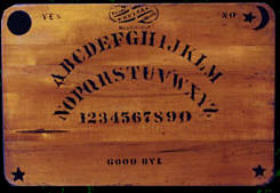
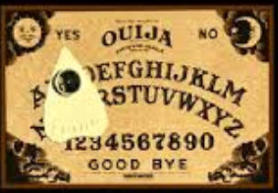
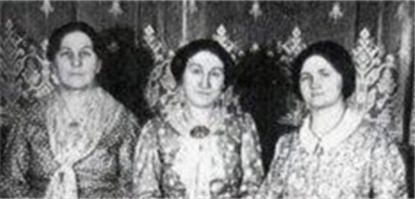
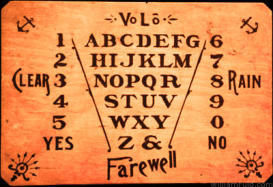
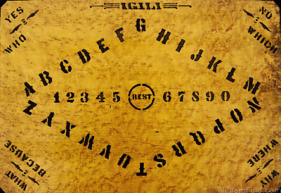
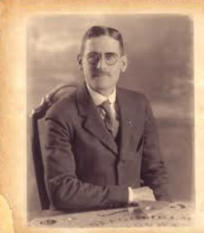
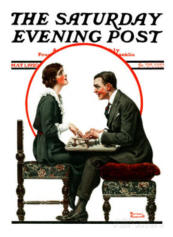
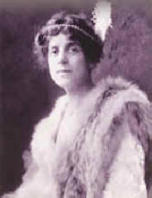
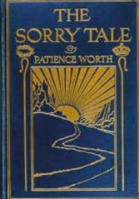
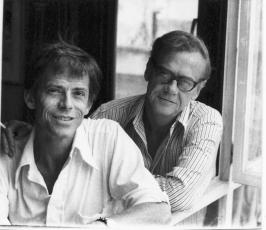
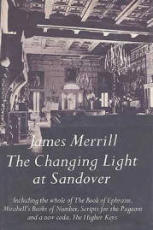
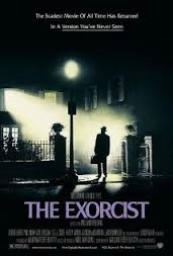
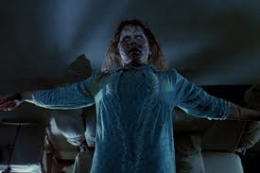

THE OUIJA BOARD - DEMYSTIFIED
BY: KEN DECOSTA





















